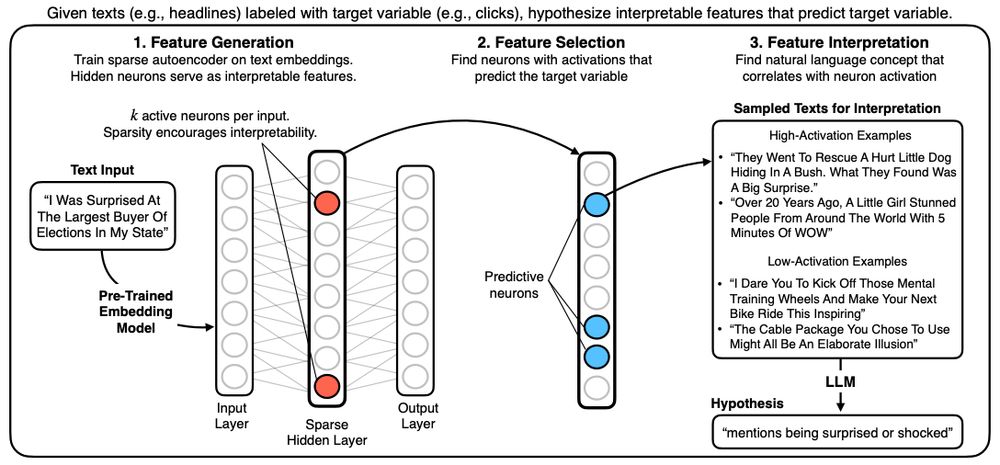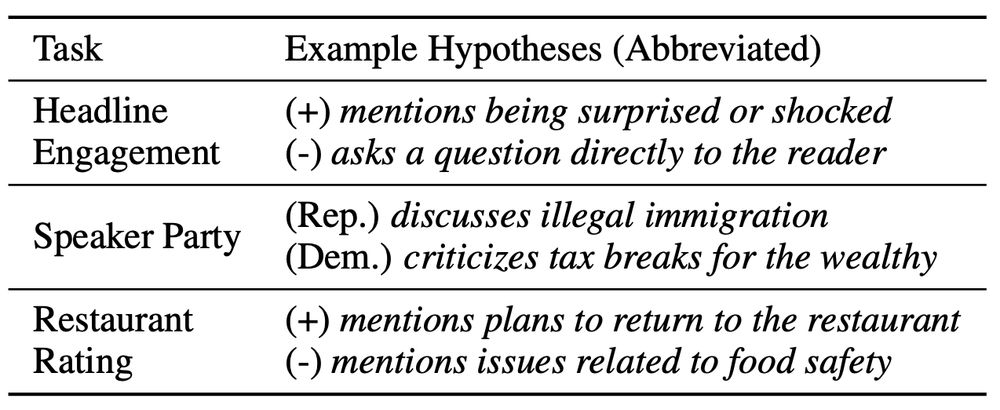CONGRATS this is so exciting!!!
04.07.2025 19:56 — 👍 1 🔁 0 💬 0 📌 0Erica Chiang
@ericachiang.bsky.social
CS PhD student at Cornell :) CMU CS ‘23 https://erica-chiang.github.io
@ericachiang.bsky.social
CS PhD student at Cornell :) CMU CS ‘23 https://erica-chiang.github.io
CONGRATS this is so exciting!!!
04.07.2025 19:56 — 👍 1 🔁 0 💬 0 📌 0aww thank you!!! you too for your best paper 😌🫶🏼
03.07.2025 13:14 — 👍 1 🔁 0 💬 0 📌 0Ahh thank you! ☺️
27.06.2025 17:44 — 👍 1 🔁 0 💬 0 📌 0I can’t believe I’m saying this: our work received a Best Paper Award at #CHIL2025!! So so excited and grateful 🥰 Looking forward to day 2 of the conference with these awesome people :)
27.06.2025 17:04 — 👍 17 🔁 2 💬 1 📌 1I wrote about science cuts and my family's immigration story as part of The McClintock Letters organized by @cornellasap.bsky.social. Haven't yet placed it in a Houston-based newspaper but hopefully it's useful here
gargnikhil.com/posts/202506...

A gif explaining the value of test-time augmentation to conformal classification. The video begins with an illustration of TTA reducing the size of the predicted set of classes for a dog image, and goes on to explain that this is because TTA promotes the true class's predicted probability to be higher, even when it's predicted to be unlikely.
New work 🎉: conformal classifiers return sets of classes for each example, with a probabilistic guarantee the true class is included. But these sets can be too large to be useful.
In our #CVPR2025 paper, we propose a method to make them more compact without sacrificing coverage.
yay!! 🤩
06.05.2025 00:12 — 👍 2 🔁 0 💬 0 📌 0I really enjoyed (and learned a LOT from) working on this project with these wonderful co-authors:
@dmshanmugam.bsky.social
Ashley Beecy
Gabriel Sayer
@destrin.bsky.social
@nkgarg.bsky.social
@emmapierson.bsky.social
7/7
Our work underscores the importance of accounting for health disparities; we lay a foundation for doing so with a method to (1) estimate disease severity in the presence of health disparities and (2) identify disparity patterns that can inform public health interventions. 6/
01.05.2025 12:57 — 👍 4 🔁 0 💬 1 📌 0The interpretability and identifiability of our model also allow us to learn fine-grained descriptions of disparities. Fitting our model on heart failure patient data from NewYork-Presbyterian, our model identifies groups that face each type of health disparity. 5/
01.05.2025 12:57 — 👍 3 🔁 0 💬 1 📌 0We prove that *failing to* account for these disparities biases severity estimates. By jointly accounting for all three, our model more accurately recovers severity. Indeed, accounting for these disparities in real heart failure data does meaningfully shift severity estimates. 4/
01.05.2025 12:57 — 👍 3 🔁 0 💬 1 📌 0We propose an interpretable disease progression model that captures 3 key disparities: certain patient groups may (1) start receiving care at higher disease severity levels, (2) experience faster disease progression, or (3) receive less frequent care conditional on severity. 3/
01.05.2025 12:57 — 👍 3 🔁 0 💬 1 📌 0Disease progression models are often used to help healthcare providers diagnose and treat chronic diseases. But these models have historically failed to account for health disparities that bias the data they are trained on. 2/
01.05.2025 12:57 — 👍 3 🔁 0 💬 1 📌 0I’m really excited to share the first paper of my PhD, “Learning Disease Progression Models That Capture Health Disparities” (accepted at #CHIL2025)! ✨ 1/
📄: arxiv.org/abs/2412.16406

The US government recently flagged my scientific grant in its "woke DEI database". Many people have asked me what I will do.
My answer today in Nature.
We will not be cowed. We will keep using AI to build a fairer, healthier world.
www.nature.com/articles/d41...
check out the findings from our #dogathon 😍🐶 !!
02.04.2025 14:23 — 👍 7 🔁 0 💬 0 📌 0Migration data lets us study responses to environmental disasters, social change patterns, policy impacts, etc. But public data is too coarse, obscuring these important phenomena!
We build MIGRATE: a dataset of yearly flows between 47 billion pairs of US Census Block Groups. 1/5

A screenshot of the abstract of the paper, detailing our findings that several multi-agent frameworks can be hijacked to enable a complete security breach.
Excited to announce a new preprint from my lab (with @rishi-jha.bsky.social and Vitaly Shmatikov; my first as a first author!) about severe security vulnerabilities in LLM-based multi-agent systems:
“Multi-Agent Systems Execute Arbitrary Malicious Code”
arxiv.org/abs/2503.12188
1/12


(1/n) New paper/code! Sparse Autoencoders for Hypothesis Generation
HypotheSAEs generates interpretable features of text data that predict a target variable: What features predict clicks from headlines / party from congressional speech / rating from Yelp review?
arxiv.org/abs/2502.04382
💡New preprint & Python package: We use sparse autoencoders to generate hypotheses from large text datasets.
Our method, HypotheSAEs, produces interpretable text features that predict a target variable, e.g. features in news headlines that predict engagement. 🧵1/
Please repost to get the word out! @nkgarg.bsky.social and I are excited to present a personalized feed for academics! It shows posts about papers from accounts you’re following bsky.app/profile/pape...
10.03.2025 15:12 — 👍 124 🔁 82 💬 6 📌 11
I'm excited to use my first post here to introduce the first paper of my PhD, "User-item fairness tradeoffs in recommendations" (NeurIPS 2024)!
This is joint work with Sudalakshmee Chiniah and my advisor @nkgarg.bsky.social
Description/links below: 1/